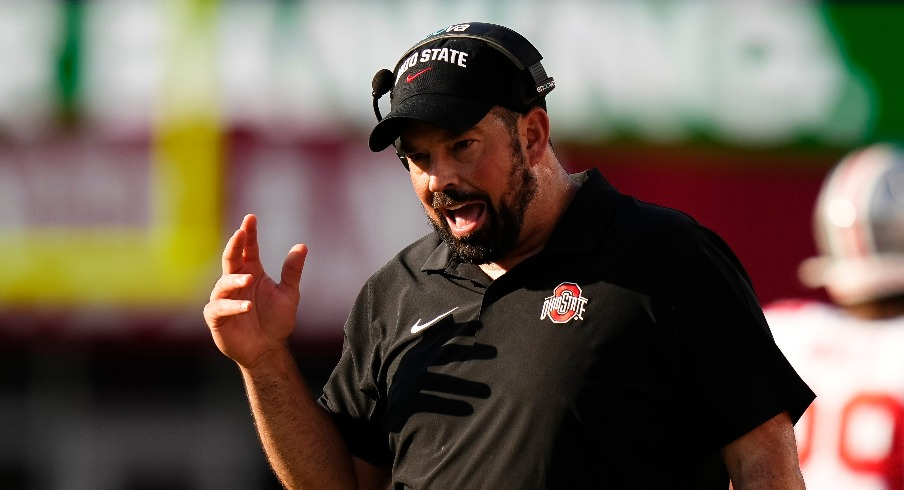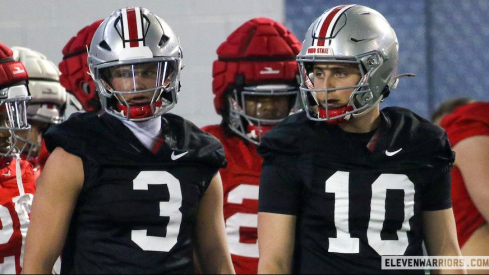It took only one game for Ohio State to bear witness to the effects of the NCAA’s offseason rule change that keeps the game clock running after first downs.
When the Buckeyes played Indiana in 2022, they got the football for 15 possessions and both teams combined to run 137 plays in a 56-14 Buckeye win.
Against Indiana this year, Ohio State had only 10 possessions and the two teams ran 125 plays combined – five and 12 less, respectively, than the year before.
Sure, it’s a sample size of a single contest, but that didn’t stop Ryan Day and the OSU coaching staff from taking notice.
“It is different,” Day said. “I certainly felt like we were on the sideline a little bit more, just felt like the game moved slower for whatever reason. It is what it is, we all have to deal with it.”
With the clock now running after first downs except in the final two minutes of each half, Ohio State and the rest of college football will have to adjust to the new pace of play and the resulting loss of chances on the offensive side of the football.
“You feel it, you do,” Day said. “You’ve just got to handle it and have a plan for it.”
The effects of the new clock rules can be accentuated by certain offensive schemes, as defensive coordinator Jim Knowles pointed out. Indiana’s triple-option attack Saturday served to do just that.
Classic upset formulas involving an underdog who capitalizes on early mistakes and chews out the clock against a more talented team could be more viable with teams having fewer possessions to make up for lost time.
It also means players lower on depth charts will have fewer chances to get experience late in games.
“It wasn’t so much a surprise (the limited number of possessions),” Knowles said. “I thought it would be that way, but it was magnified by the kind of offense that we went against. It made it even more difficult to play as many guys as I would have liked.”
Early-game execution gets an added emphasis with fewer plays available, Day added.
“It means we have to be more and more efficient,” Day said. “You might get less possessions in that first half, so they’ve got to count. Then when we get into halftime, we can’t panic. We have to know that we have one less possession, especially if we defer. Then we’ve got to play really well in the second half. So if you’re executing well and converting on third down and doing well in the red zone, it’s not an issue. If not, then it is.”
Ohio State’s coaches aren’t the only ones taking stock of the new rules and their impacts. UCLA head coach Chip Kelly, a mentor of Day’s, was sure to mention the changes on national television this past Saturday.
Add UCLAs Chip Kelly to those who dont like the new clock rules. Hope you guys are selling a lot of commercials.pic.twitter.com/zX3PecCKit
— Brett McMurphy (@Brett_McMurphy) September 3, 2023
Ohio State and everyone else in the sport will have to continue adjusting to the new normal of college football as the 2023 season unfolds.
“More and more, you have to be on top of your execution, because I feel like even five years ago, you were getting 12 or 13 possessions,” Day said. “You missed one here or there, ‘OK, we’re going to get the ball back and have another opportunity.’ Not the case right now.”


